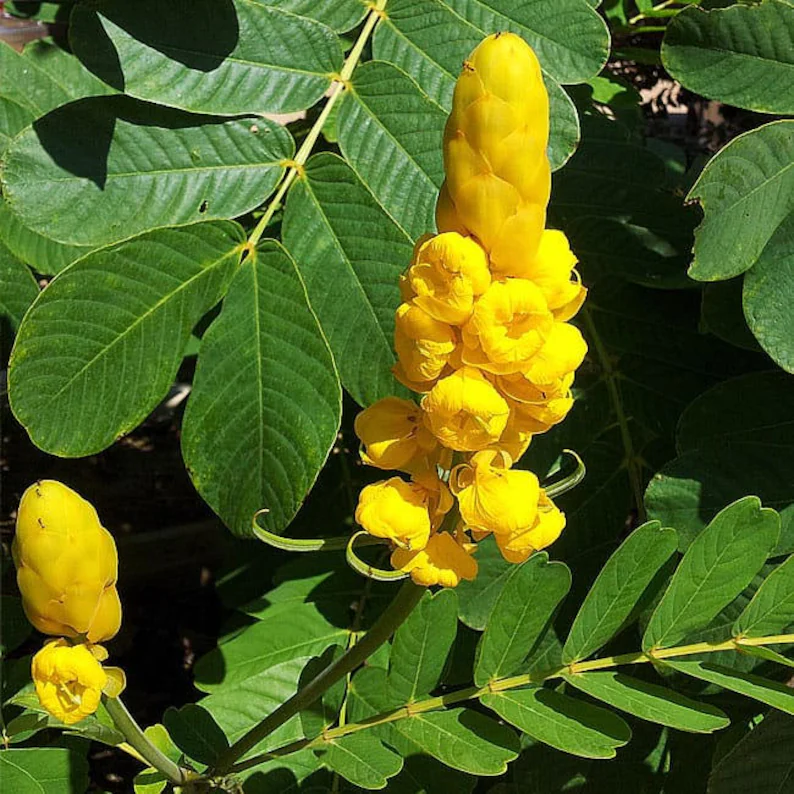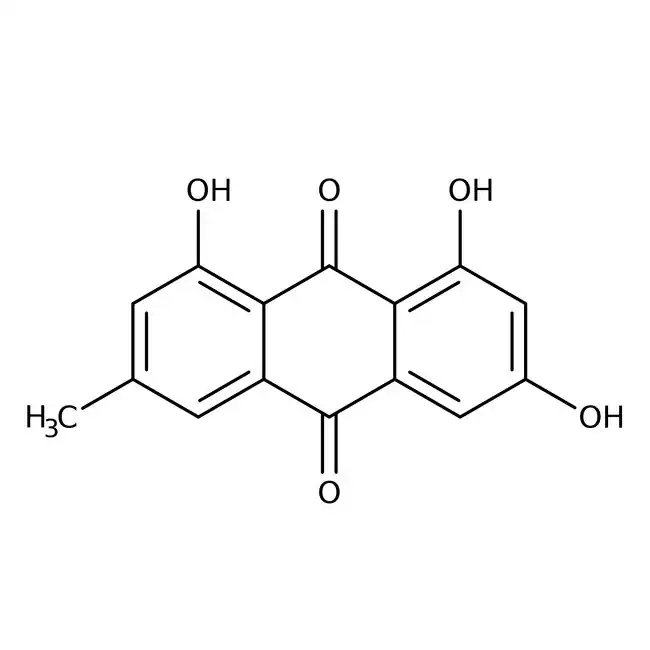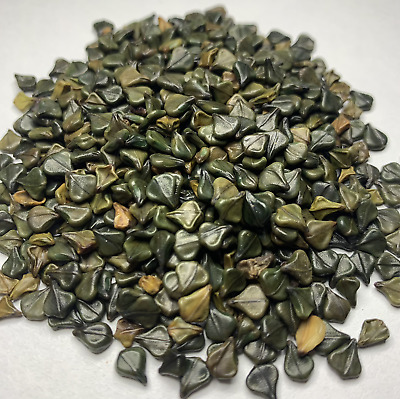Other names
Ringworm bush and emperor’s candlesticks (English), asuwon oyibo (Yoruba), ogalu (Igbo), Filisko (Hausa)
The diverse botanical and cultural history of Guatemala owes much to the Mayan Civilization. Traditional medicine in this region serves a multitude of purposes, yet it often goes unrecognized. Today, researchers are actively rediscovering and studying these cultural practices. The journey of incorporating this knowledge into the French pharmacopoeia has been fraught with challenges, much like the botanicals of these regions themselves. The reluctance to accept medicinal and botanical knowledge from black people during the era of Caribbean slavery greatly influenced this history. The creation of the French Pharmacopoeia coincided with this period, and distrust among white settlers led to suspicions of poisoning, thereby limiting inclusion to plants indigenous to the Carribean region.

Kingdom: Plantae
Clade: Tracheophytes
Clade: Angiosperms
Clade: Eudicots
Clade: Rosids
Order: Fabales
Family: Fabaceae
Subfamily: Caesalpinioideae
Genus: Senna
Species: S. alata
Medicinal Uses
- Antidiabetic
- Dermatologic- Skin rashes, athlete’s foot, herpes zoster eczema, mycosis.
- Digestive- Assists with symptoms of constipation, liver disease, and jaundice.
- Anti infectious- Malaria, Flu.
- Inflammation
- Thoracic Pain
Diabetic Research
Senna alata has been investigated for its antidiabetic potential, primarily attributed to its bioactive compounds such as flavonoids, alkaloids, and saponins. These compounds may exert hypoglycemic effects by various mechanisms, including enhancing insulin secretion, improving insulin sensitivity, and inhibiting glucose absorption in the intestine.
Research suggests that Senna alata extracts may stimulate insulin secretion from pancreatic beta cells. This effect can help in reducing blood glucose levels by promoting the uptake of glucose into cells for energy metabolism.
Diabetes is often associated with increased oxidative stress, which can exacerbate complications such as diabetic neuropathy and nephropathy. Senna alata contains antioxidants that may help neutralize free radicals and reduce oxidative stress, thereby potentially mitigating diabetic complications.
Chronic inflammation plays a significant role in the development and progression of diabetes and its complications. Senna alata has been investigated for its anti-inflammatory properties, which could contribute to its therapeutic benefits in diabetes management.
Diabetes is frequently accompanied by dyslipidemia (abnormal lipid levels), which increases the risk of cardiovascular diseases. Studies suggest that Senna alata extracts may help in improving lipid profiles by lowering levels of total cholesterol, triglycerides, and LDL cholesterol while increasing HDL cholesterol levels.
Diabetic nephropathy (kidney disease) is a common complication of diabetes. Some research indicates that Senna alata extracts may have Reno protective effects, potentially reducing kidney damage associated with diabetes through mechanisms such as antioxidant and anti-inflammatory actions.
Diabetes can impair wound healing due to poor circulation and compromised immune function. Senna alata has been traditionally used for wound healing purposes and may promote faster healing of diabetic ulcers and wounds, although specific studies on its diabetic wound healing properties are limited.
Key metabolites in Senna alata known to help with diabetes:
- Flavonoids: Senna alata is rich in flavonoids, including kaempferol and its glycosides such as kaempferol-3-O-gentiobioside. Flavonoids like kaempferol have been studied for their ability to enhance insulin secretion from pancreatic beta cells and improve insulin sensitivity in peripheral tissues. These actions help regulate blood glucose levels in individuals with diabetes.
- Enhance Insulin Sensitivity: Kaempferol and rutin improve insulin sensitivity, facilitating better glucose uptake by cells and potentially lowering blood glucose levels.
- Inhibit Carbohydrate Digestion: Quercetin inhibits enzymes involved in carbohydrate digestion, such as alpha-glucosidase and alpha-amylase, helping to stabilize postprandial blood glucose levels.
- Protect Pancreatic Beta Cells: Rutin and apigenin protect pancreatic beta cells from oxidative stress, preserving their function and insulin production.
- Reduce Inflammation: Apigenin’s anti-inflammatory effects may alleviate inflammation associated with diabetes, potentially mitigating complications.
- Anthraquinones: While primarily recognized for their laxative effects, anthraquinones found in Senna alata, such as sennosides, also exhibit potential antidiabetic properties. Research suggests that these compounds may modulate glucose absorption in the intestines and enhance glucose uptake by peripheral tissues, thereby lowering blood sugar levels.
- Antidiabetic Activity: Anthraquinones such as Rhein and emodin have been studied for their ability to lower blood glucose levels. They may act by enhancing insulin sensitivity or stimulating insulin secretion from pancreatic beta cells.
- Anti-inflammatory Effects: Chronic inflammation is closely linked to insulin resistance and diabetes. Anthraquinones in Senna alata, particularly emodin, possess anti-inflammatory properties that can help mitigate inflammation associated with diabetes.
- Antioxidant Properties: Oxidative stress plays a significant role in the progression of diabetes and its complications. Anthraquinones act as antioxidants, scavenging free radicals and reducing oxidative damage to cells and tissues.
- Regulation of Lipid Metabolism: Some anthraquinones have shown potential in regulating lipid metabolism, including lowering cholesterol and triglyceride levels, which are important factors in managing diabetes.
- Reno protective Effects: Diabetes often leads to diabetic nephropathy (kidney damage). Anthraquinones like Rhein have demonstrated protective effects on renal function, potentially delaying the onset or progression of diabetic kidney disease.
- Phenolic Compounds: Senna alata contains phenolic compounds known for their antioxidant and anti-inflammatory properties. These compounds help protect pancreatic beta cells from oxidative stress-induced damage, thereby preserving their function in insulin production.
- Cardioprotective Benefits: Diabetes increases the risk of cardiovascular diseases. Phenolic compounds can help improve lipid profile by lowering LDL cholesterol and triglyceride levels, thereby reducing the risk of cardiovascular complications in diabetic patients.
- Neuroprotective Effects: Diabetes can lead to neurological complications. Phenolic compounds may protect nerve cells from damage associated with diabetes-induced oxidative stress, potentially preventing or delaying diabetic neuropathy.
- Potential for Glycemic Control: Certain phenolic compounds have been shown to modulate glucose metabolism and enhance glycemic control. They may influence glucose uptake in peripheral tissues and promote glucose utilization, thereby helping to maintain stable blood glucose levels.
- Terpenoids: Terpenoids found in Senna alata, such as β-sitosterol and stigmasterol, have been implicated in improving insulin sensitivity and lowering blood lipid levels. They may also contribute to the overall metabolic balance beneficial for individuals with diabetes.
- Enhanced Glucose Metabolism: Some terpenoids have been reported to enhance glucose uptake in peripheral tissues and improve glucose utilization, contributing to better glycemic control in diabetic patients.
- Antidiabetic Activity: Terpenoids have been investigated for their hypoglycemic effects. They may help lower blood glucose levels by enhancing insulin sensitivity, stimulating insulin secretion from pancreatic beta cells, or inhibiting enzymes involved in carbohydrate metabolism like α-amylase and α-glucosidase.
- Polyphenols: Polyphenolic compounds in Senna alata possess antioxidant properties that help mitigate oxidative stress, which plays a role in the development and progression of diabetes-related complications.
- Modulation of Gut Microbiota: Polyphenols can influence the composition and activity of gut microbiota, promoting the growth of beneficial bacteria that produce short-chain fatty acids. This modulation may improve glucose metabolism, enhance insulin sensitivity, and contribute to overall metabolic health in individuals with diabetes.
Information from https://doi.org/10.1016/j.jep.2020.112997:
There is much potential of secondary metabolites from Senna alata flower extracts, in managing diabetes and its complications. Using an alloxan-induced diabetes model in rats, researchers observed that the ethyl acetate fraction and its sub-fraction B from Senna alata flowers demonstrated significant anti-hyperglycemic effects. These effects were attributed to enhanced insulin production, improved glucose uptake by tissues, and restoration of hepatic glycogen levels.
The plant extracts normalized dyslipidemia associated with diabetes, improving lipid profiles by reducing total cholesterol, LDL-cholesterol, VLDL-cholesterol, and triglycerides while increasing HDL-cholesterol levels. This suggests potential cardiovascular protective benefits.
The extracts showed promise in mitigating diabetic complications such as albuminuria (indicative of renal dysfunction) and hepatic glycogen depletion. The observed effects were linked to enhanced activities of glucose metabolism enzymes (hexokinase and glucose-6-phosphate dehydrogenase) and inhibition of carbohydrate-digesting enzymes (alpha-amylase and alpha-glucosidase).
Emodin, identified as a key compound in the ethyl acetate fraction, was highlighted for its anti-diabetic properties, including enzyme inhibition and modulation of glucose metabolism pathways. These findings underscore the therapeutic potential of plant-derived secondary metabolites in treating diabetes and its associated complications.

Dermatologic Research
One of the most well-known benefits of Senna alata is its strong antifungal properties. It is effective against a wide range of fungal infections, including dermatophytes that cause conditions like ringworm (tinea corporis), athlete’s foot (tinea pedis), and tinea imbricata. The leaves and extracts of Senna alata contain compounds such as anthraquinones and flavonoids that exhibit potent antifungal activity, making it a valuable natural treatment for fungal skin infections.
Beyond its antifungal effects, Senna alata also possesses antibacterial properties. This makes it useful in treating bacterial skin infections, including those caused by Staphylococcus aureus and Streptococcus pyogenes, which are common pathogens in skin ailments.
Senna alata has demonstrated anti-inflammatory properties, which can help reduce inflammation and swelling associated with various skin conditions. This anti-inflammatory action can be beneficial in soothing skin irritations and allergic reactions.
The leaves of Senna alata have been traditionally used to promote wound healing. Its antimicrobial properties help prevent infections in wounds, while its anti-inflammatory effects contribute to reducing inflammation and speeding up the healing process.
Senna alata contains antioxidants that protect the skin from oxidative stress caused by free radicals. This antioxidant activity helps in maintaining healthy skin by reducing oxidative damage and preventing premature aging.
Some studies suggest that Senna alata extracts may have skin lightening effects. This is attributed to its ability to inhibit melanin production, making it potentially useful in treating hyperpigmentation disorders like melasma and post-inflammatory hyperpigmentation.
In traditional medicine practices, Senna alata has been used to treat a variety of skin conditions, including eczema, psoriasis, scabies, and rashes. Its broad spectrum of antimicrobial and anti-inflammatory actions supports its use in managing these dermatological issues.
Anthraquinones present in Senna alata:
- Sennosides: These are glycosides of anthraquinone derivatives found in the leaves and pods of Senna alata. Sennosides are known for their laxative properties but also exhibit antimicrobial activity, which can help in treating skin infections associated with rashes.
- Emodin: Emodin is a natural anthraquinone compound found in various parts of the plant. It possesses anti-inflammatory, antibacterial, antiviral, and antioxidant properties. Emodin has been studied for its potential to alleviate skin inflammation, itching, and irritation associated with rashes.
- Chrysophanol: Another anthraquinone derivative present in Senna alata, chrysophanol, exhibits antimicrobial and anti-inflammatory properties. It has been traditionally used to treat various skin conditions, including eczema and fungal infections, which can manifest as rashes.
- Rhein: Rhein is an anthraquinone derivative with antioxidant and anti-inflammatory properties. It has been investigated for its potential in wound healing and alleviating skin inflammation, which are beneficial in managing skin rashes.
Here are some flavonoids found in Senna alata that help with dermatological concerns:
- Kaempferol: This is a flavanol known for its antioxidant and anti-inflammatory properties. It helps neutralize free radicals that contribute to skin aging and damage. Kaempferol exhibits potential in promoting wound healing and reducing inflammation associated with skin conditions. Kaempferol can help soothe irritated skin, reduce redness, and protect against UV-induced damage, making it beneficial for treating conditions like eczema, psoriasis, and allergic dermatitis.
- Quercetin: This is a flavonoid with potent antioxidant and anti-inflammatory effects. It scavenges free radicals and inhibits inflammatory pathways, thereby protecting skin cells from oxidative stress and inflammation. Quercetin can help alleviate symptoms of inflammatory skin conditions such as acne, rosacea, and dermatitis. Its antioxidant properties also contribute to overall skin health by supporting collagen production and maintaining skin elasticity.
- Rutin: This is a flavonoid glycoside known for its antioxidant and vasoprotective properties. It strengthens blood vessels and reduces capillary permeability, which can benefit skin health by improving circulation and reducing the appearance of spider veins. Rutin’s antioxidant activity helps protect skin cells from oxidative stress and UV damage. It is also anti-inflammatory, making it effective in soothing skin irritation and promoting healing of minor wounds and cuts.
- Apigenin: This is a flavone with antioxidant, anti-inflammatory, and antimicrobial properties. It helps regulate immune responses in the skin and reduces inflammation caused by environmental stressors. Apigenin’s anti-inflammatory effects make it useful in calming skin conditions such as eczema, contact dermatitis, and sunburns. Its antimicrobial properties also contribute to its effectiveness against acne-causing bacteria.
Information from https://doi.org/10.1111/MYC.13159 :
Tinea imbricata poses a significant health challenge among the T’boli people living in remote mountain regions, where access to standard antifungal medications is limited and concerns over their safety and cost are pronounced. To address these issues, researchers explored the use of a locally prepared remedy using Senna alata leaves.
Studies have found that applying the Senna alata leaf decoction improved tinea imbricata lesions within a month, easing symptoms like itching and reducing the severity of the infection in a notable number of participants. This improvement not only enhanced the physical condition of the affected individuals but also improved their overall quality of life.
The method of preparing the remedy—boiling Senna alata leaves to create a body wash—was noted for its practicality and affordability, especially suitable for treating the widespread skin involvement characteristic of tinea imbricata.
It has been also acknowledged that limitations such as small-scale applications and the absence of a control group persisted in these studies, which are essential for robust scientific validation. Due to the remote locations of the villages involved, frequent monitoring and larger-scale trials were challenging but deemed necessary to establish the treatment’s efficacy and safety conclusively.
This specific study showed the community-driven approach of empowering indigenous groups to prepare their own herbal remedies as a significant benefit. This not only promotes treatment adherence but also restores hope among community members who previously felt their condition had no viable cure.
While initial results are promising, further research, including rigorous clinical trials, is needed to validate the efficacy and safety of Senna alata leaf decoction as a sustainable treatment option for tinea imbricata. If proven effective, this approach could offer a culturally sensitive, accessible, and cost-effective solution for managing this persistent fungal infection among marginalized populations.
Availability and Sustainability

Senna alata is native to tropical regions of the Americas but has spread to other tropical and subtropical areas worldwide. It thrives in warm climates and is often found in tropical forests, disturbed habitats, and cultivated gardens.
The plant is relatively easy to cultivate from seeds or stem cuttings. It grows well in fertile, well-drained soils and requires regular watering. Its ability to propagate easily contributes to its availability in both wild and cultivated settings.
Despite its widespread distribution and ease of propagation, there are sustainability concerns related to the overharvesting of wild populations for medicinal purposes. Unsustainable harvesting practices could deplete natural populations and affect biodiversity.
Efforts to conserve Senna alata and other medicinal plants often focus on promoting sustainable harvesting practices, cultivation in agroforestry systems, and community-based conservation initiatives. These efforts aim to ensure the plant’s availability while maintaining ecological balance.
Sustainable management practices and further research will play crucial roles in maintaining the availability and effectiveness of this valuable medicinal plant.